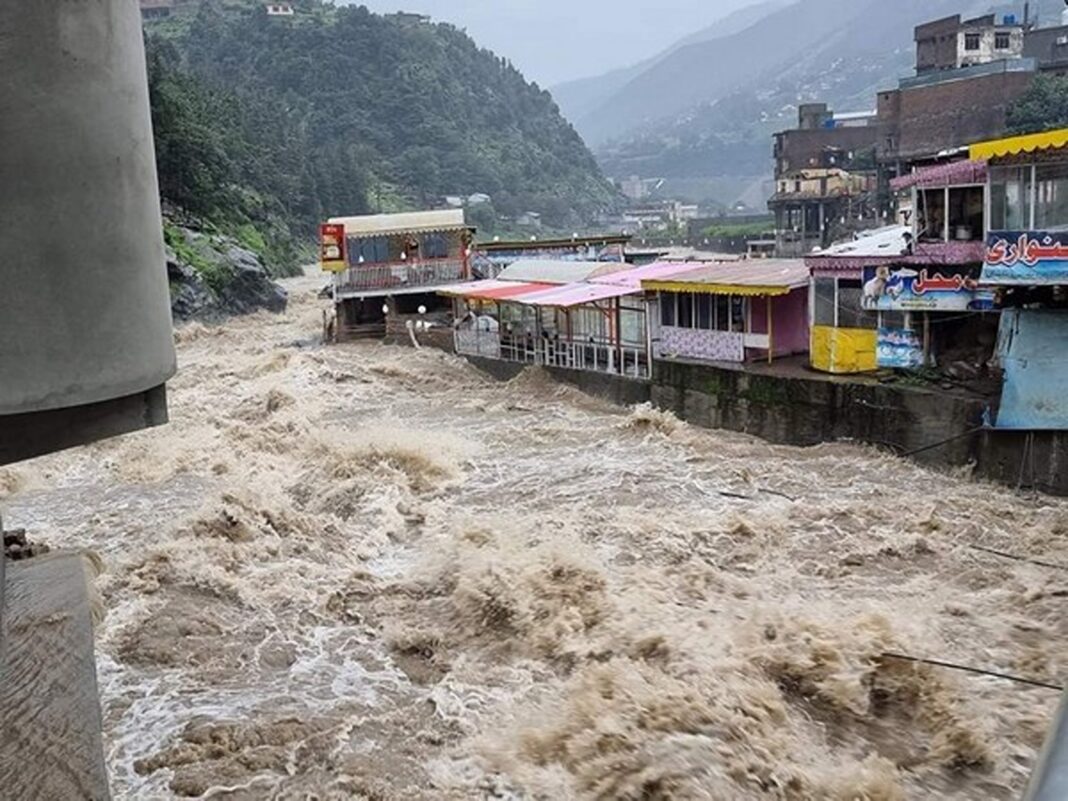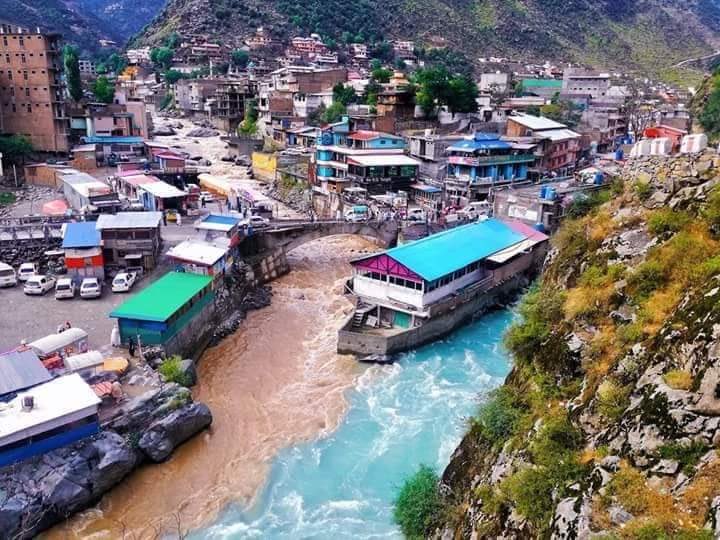This Cycle of Devastation had begun in 2010, devastating floods claimed almost 2,000 lives across the country, with around 95 deaths in Swat itself. Bridges, fields, and villages disappeared overnight. More than 20 million Pakistanis lost their property or means of livelihood, and children such as Bilal were rescued from rooftops, holding nothing but school books.
In 2022, a century-level monsoon drowned a third of the country under water, hitting 33 million people and causing $30–40billion in damages. In Swat, hotels and bridges crumbled into foaming water as viral videos from Kalam depicted infrastructure constructed on riverbeds swept away.
2025: The trauma returns. In mid-August, heavy rainfall and cloud bursts caused flooding in cities like Mingora. Over 300 people across northern Pakistan have died, most severely affecting Khyber Pakhtunkhwa. 42 homes in Swat alone faced total collapse.
“It feels like we are trapped in the same nightmare over and over again,” says Zahir, as his child asks whether the school will reopen.
The Science of Repetition
There are nearly 7,200 glaciers located high above Pakistan, which feed its rivers. Summers are warming, however, and glaciers are melting faster due to increasing temperatures. That meltwater fills the glacial lakes with water, which can suddenly burst through their thin walls. When this year’s heavy rains started, officials already feared such outburst floods would drown the valleys.
This sudden, heavy rain falls so fast that the ground and rivers can’t deal with it. Instead of slowly flowing, the water rushes down violently. It mixes with mud and rocks, giving rise to devastating flash floods. Climate scientists say human-caused warming of the atmosphere is one reason these cloud bursts are becoming more intense.
More than 700 hotels, restaurants, and houses have been constructed on or perilously near the banks of the Swat River despite planning regulations. Many are erased in each new disaster. At least 30 illegally constructed hotels were leveled in 2022. In 2025, the same pattern continued. Resorts and guesthouses were left with only their roofs sticking out above the floodwaters, where streets had previously existed.
These structures, approved by local government hungry for tourist money, function like plugged dams, pushing river water upstream and producing instantaneous floods in bazaar hubs.
Pakistan’s MET Department and NDMA issued heavy-rain/GLOF warnings this season, but numerous valley dwellers claim that they were not informed in time to evacuate. Alarms were there. Last-mile communication, trust, and evacuation planning were behind.
The Contrast: Lahore’s Safe City vs Swat’s Unsafe Valley
Proven Models: What Could Be Done!
Rivers require space to breathe. In the Netherlands, the Room for the River scheme redesigned floodplains, relocated dikes, and constructed relief channels. Mountain valleys like Swat can replicate these concepts: setback embankments, sacrificial parks, and debris basins to provide rivers a safe passage while safeguarding communities.
Accountability: The Science–Policy Question
When a city can bring thousands of cameras and one number together to lower crime response times, the science and engineering are there to bring hundreds of gauges, village sirens, and one valley-wide flood room together. Swat lacks not knowledge, but a requirement to enforce no-build zones, pay for real-time hydrology, and practice evacuations annually, before the rain.
References:
- https://www.youtube.com/watch?v=FG11umrKslg
- https://www.dawn.com/news/1931134
- https://www.youtube.com/watch?v=FG11umrKslg
- https://www.dawn.com/news/1931134
- youtubethenews+3, app+2, dawn+3youtube, finance+4
- https://www.academia.edu/72076206/A_critique_of_Lahore_Safe_City_Project?utm_source=chatgpt.com “(DOC) A critique of Lahore Safe City Project – Academia.edu”
- https://www.reuters.com/business/environment/flash-floods-devastate-buner-pakistan-after-rare-cloudburst-kills-hundreds-2025-08-17/?
- https://apnews.com/article/pakistan-floods-weather-d385bc06a9455218581eec84e492c65b?
- https://www.theguardian.com/world/2025/jul/09/accelerated-glacial-melt-and-monsoon-rains-trigger-deadly-floods-in-pakistan
- https://www.icimod.org/long-term-cryosphere-monitoring-programme-in-pakistan-seeks-to-understand-and-protect-glaciers/?
- https://www.aljazeera.com/news/2025/7/26/pakistan-issues-glacial-floods-alert-for-northwest-heavy-rain-forecast
- https://apnews.com/article/2f4248b5fb63dbf8bfb18836a05de823?
More articles of your interest: Swat Flood Tragedy: A Wake-Up Call on Climate Change, not a Headline to Forget

Hadia Rashid is a BS (Hons.) student of Applied Microbiology at UVAS Lahore. Passionate about science communication, she writes to bridge the gap between research, the environment, and society.


